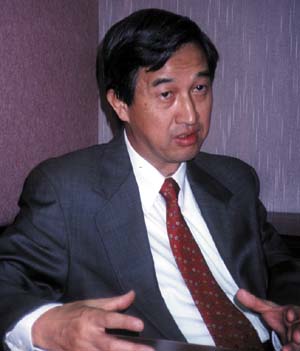Seeking a better funding model
By Charis Ma
The University Grants Committee is appointed
by the chief executive to advise the government on university funding.
Mr. Peter Cheung Po Tak is the general secretary of the Committee.
He said that in order to determine the universities’ budgets, the
Committee seeks advice from the government on future manpower needs.
For example, the government tells the Committee the expected number
of vacancies that the Hospital Authority will have for internships of
medical students.
The Committee calculates a “cash limit” based on the student
unit cost and the student number targets. The student unit cost is the
cost of educating one student for one year. The student number target
is the number of freshmen enrolled by universities.
Currently the student number target for all universities is 14,500,
meeting the government requirement of 18 percent of the population aged
18 to 20.
The unit cost varies by discipline and year of study, but the average
is $228,544. For example, the unit cost to train a journalism student
is about $250,000 per year, but the unit cost for a medical student
is more than $1 million per year. Student tuition fees — $42,100
per student per year — account for 18 percent of the total costs,
the bulk being borne by the government.
Aside from discipline and year of study, historical costs and international
comparisons are also taken into account in calculating the universities’
budgets.
Historical costs are average costs from the previous three years.
The costs of educating students in the same disciplines in other nations
are also considered.
The government calculates recurrent grants for a university using the
crude average student unit cost, however.
That means the funds are calculated by multiplying the average student
unit cost by the total number of students, regardless of disciplines
and academic levels.
|
Charis Ma
|
 |
| Mr. Peter Cheung Po Tak says
that the formula calculating grants may be changed in 2004. |
Another formula has been proposed by the government, but Mr. Cheung
said that there are considerable discrepancies in calculations using
the two formulas.
“We are struggling with the government to change the funding
formula,” said Mr. Cheung.
He said Mrs. Fanny Law Fan Chiu Fun, secretary of the Education
and Manpower Bureau, has promised to review the current funding
methodology.
The earliest that the formula might change would be in the next
triennium, the three academic years from 2004/2005 to 2006/2007.
Meanwhile, a new rule adopted in the current triennium allows institutions
to carry forward 20 percent of recurrent grants as reserves.
“It is believed that this will smooth out the problem,”
Mr. Cheung said.
Except for the 20 percent that can be carried forward, unspent funds
must be returned to the government.
|
Next